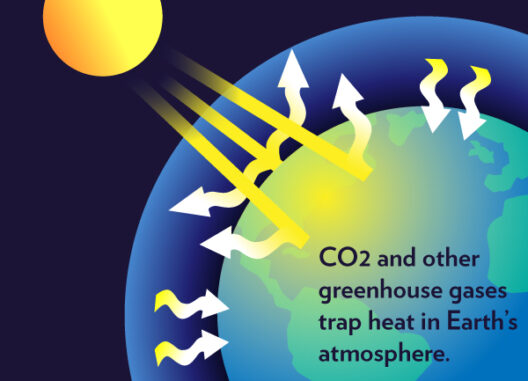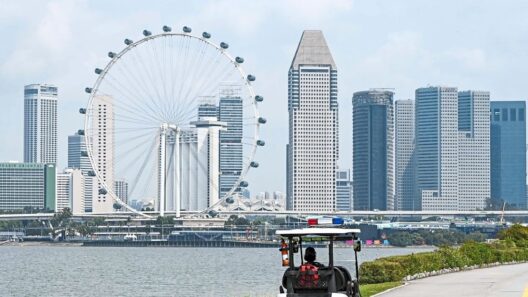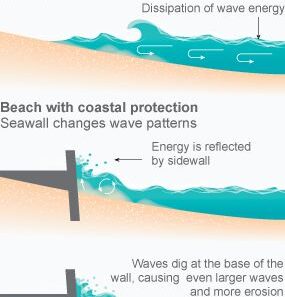The phenomenon of rising sea levels has emerged as a critical challenge facing coastal regions around the globe. As a consequence of climate change, the economic ramifications of this environmental shift are becoming increasingly evident. Understanding how rising sea levels impact the economy requires a multifaceted examination of various sectors, including real estate, tourism, fisheries, and public infrastructure. This article delves into these dimensions, articulating the intricate ways in which ocean-level increases affect both local and national economies.
Increased Vulnerability of Coastal Properties
The vulnerability of coastal properties to flooding and erosion poses significant economic threats. As sea levels rise, properties in coastal areas are subjected to more frequent and severe flooding, leading to diminished real estate values. Homeowners and investors face the daunting prospect of declining property prices, which in turn may precipitate a broader crisis in the real estate market.
Local economies heavily reliant on coastal housing markets can experience severe downturns. A decrease in property values translates to lower property taxes, diminishing revenue for local governments. This leads to budgetary constraints that affect public services, from education to emergency services, exacerbating socio-economic challenges in the community.
Moreover, the threat of flooding can create a ripple effect on mortgage markets. As properties become increasingly viewed as high-risk investments, lenders may impose stringent conditions or higher interest rates on loans. The combination of higher mortgage costs and declining property values may disincentivize home buying, potentially leading to a glut of unsold homes and further depressions in values.
Devastation to the Tourism Industry
This vulnerability extends to the tourism industry, a cornerstone of many coastal economies. Beachfront properties, once coveted destinations, can be rendered unappealing due to the threat of rising tides. As climates shift, regions traditionally favored for their idyllic landscapes may experience a decline in tourist influx, causing significant economic disruptions.
Tourism-dependent regions may find themselves grappling with stranded assets—hotels, restaurants, and recreational facilities located in areas subjected to increased flooding. Not only does this impact employment within the industry, but it also reverberates through ancillary services that support tourism, such as transportation, food production, and retail.
Adaptation efforts, such as constructing sea walls or engaging in managed retreat strategies, demand substantial investments. These costs can divert public funds away from other essential services, straining local governments’ financial capacities. When infrastructures designed for tourism fail, the long-term economic implications can be far-reaching, potentially transforming vibrant communities into ghost towns.
The Threat to Fisheries and Aquaculture
The fisheries sector is not immune to the economic consequences of rising sea levels. As coastal ecosystems face disruption, the habitats for many commercially important species are threateningly altered. For instance, rising temperatures and changing salinity levels can adversely affect fish populations, resulting in declining catch yields.
Additionally, aquaculture, which is increasingly recognized as a sustainable food source, also encounters challenges with encroaching saltwater into freshwater environments. Aquaculture operations, which are crucial for local economies and food security, may require costly adaptations to withstand the changing parameters of their operational environment.
Restoration efforts for coastal ecosystems, including mangroves and wetlands, can provide essential buffers against storm surges and flooding. However, the initial costs for these restoration projects can deter investment. As fish stocks decline and restoration efforts falter, many communities dependent on these ecosystems for their livelihoods may find themselves economically destabilized, driving migration and socio-economic disparities further inland.
Infrastructure Strain from Rising Seas
The infrastructure supporting coastal communities—roads, bridges, ports, and wastewater systems—faces significant risks as sea levels rise. The financial burden associated with retrofitting or replacing such infrastructure can be astronomical. Local governments may struggle to allocate funds for these improvements, resulting in deteriorating conditions that can lead to costly disasters when flooding occurs.
Vulnerable infrastructure not only affects mobility and public access but can lead to increased logistical costs for businesses reliant on transportation. Wastewater systems inundated by rising tides are particularly alarming, posing public health risks and necessitating immediate governmental action.
Infrastructure investment, when approached proactively, can mitigate some of the risks posed by rising sea levels. However, the funding mechanisms for such projects remain elusive. The complexity of securing federal, state, and local funding can delay essential projects, leading to compounded economic difficulties.
The Broader Economic Context
Ultimately, the economic consequences of rising sea levels extend beyond individual sectors or communities; they intertwine with national and global economic stability. As coastal areas increasingly bear the burden of natural disasters exacerbated by climate change, the collective economic toll may manifest through property insurance hikes, increased federal disaster relief expenditures, and potential disruptions to national supply chains.
This leads to challenging dilemmas for policymakers tasked with navigating the intricacies of climate action and economic sustainability. As adaptation efforts ramp up, investment in resilient infrastructure and restoration projects will be essential to mitigate future economic fallout.
In conclusion, understanding the intricacies of rising sea levels and their economic ramifications points to the urgent need for comprehensive planning at all governmental levels. Communities, businesses, and governments must collectively realize that proactive measures today will safeguard the economic vitality of tomorrow. The convergence of environmental stewardship and economic pragmatism forms the crux of a sustainable future for coastal populations.








